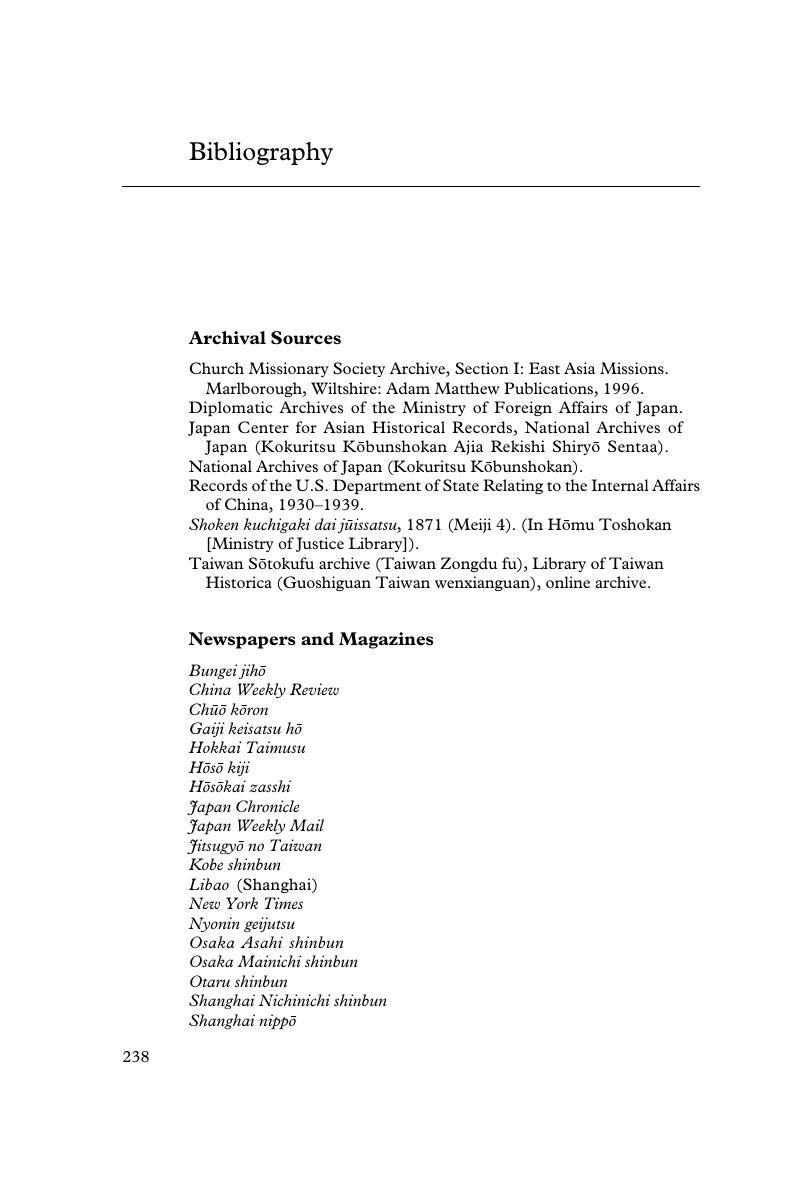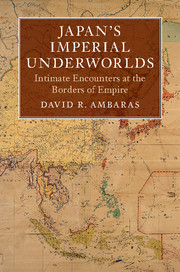Book contents
- Japan’s Imperial Underworlds
- Asian Connections
- Japan’s Imperial Underworlds
- Copyright page
- Dedication
- Contents
- Maps and Figures
- Acknowledgments
- Maps
- Introduction
- 1 Treaty Ports and Traffickers
- 2 In the Antlion’s Pit
- 3 Embodying the Borderland in the Taiwan Strait
- 4 Borders in Blood, Water, and Ink
- 5 Epilogue
- Bibliography
- Index
- Studies of the Weatherhead East Asian Institute, Columbia University
- References
Bibliography
Published online by Cambridge University Press: 24 July 2018
- Japan’s Imperial Underworlds
- Asian Connections
- Japan’s Imperial Underworlds
- Copyright page
- Dedication
- Contents
- Maps and Figures
- Acknowledgments
- Maps
- Introduction
- 1 Treaty Ports and Traffickers
- 2 In the Antlion’s Pit
- 3 Embodying the Borderland in the Taiwan Strait
- 4 Borders in Blood, Water, and Ink
- 5 Epilogue
- Bibliography
- Index
- Studies of the Weatherhead East Asian Institute, Columbia University
- References
Summary

- Type
- Chapter
- Information
- Japan's Imperial UnderworldsIntimate Encounters at the Borders of Empire, pp. 238 - 272Publisher: Cambridge University PressPrint publication year: 2018



